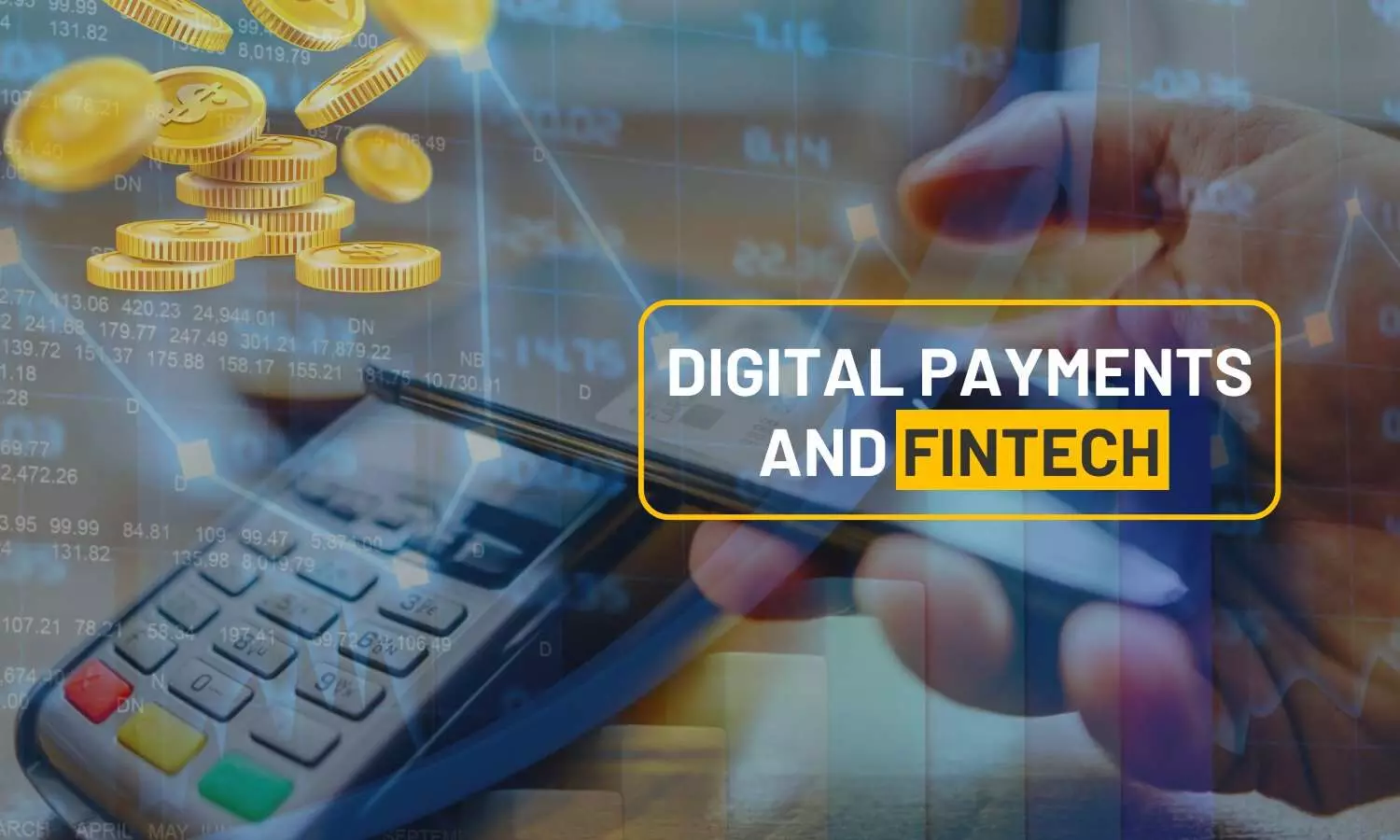Digital Payments & Fintech: The Future of Financial Transactions
Discover how fintech innovations and digital payments are transforming financial services and driving the shift toward a secure, cashless economy.
Digital Payments & Fintech: The Future of Financial Transactions

The swift rise of digital payments and fintech has transformed financial transactions. As we advance towards a cashless economy, fintech innovations are spearheading the adoption of secure, efficient, and scalable payment solutions. This article explores the rise of digital payments, the role of fintech in banking, and the future of financial services.
The Growth Story of Digital Payments in India
The shift towards a cashless economy has been accelerated by significant moves such as the demonetization in India and also the global pandemic. The widespread adoption of digital payment from e-commerce to in-store purchases gave a steady rise in payment volumes over the years for its convenience. As per a recent report, global digital payment transactions are expected to exceed USD 10 trillion annually by 2025, reflecting the tremendous growth in this sector. In developing economies, digital payments are seen as a tool for bridging the financial gap, and providing access to financial services for the unbanked.
How Fintechs Innovating Payment Systems
The rise of digital payments can be attributed to the groundbreaking innovations introduced by fintech companies. Fintech, short for financial technology, is reshaping how transactions are processed, monitored, and secured. Through fintech innovations in payments, consumers can now enjoy faster, more convenient, and often more cost-effective payment solutions.
One of the most notable fintech innovations is mobile payments technology. Apps like Apple Pay, Google Pay, and Samsung Pay have transformed smartphones into digital wallets, enabling users to make payments with just a tap or scan. In addition, fintech startups have developed new payment platforms that integrate blockchain technology to provide enhanced security, speed, and transparency in transactions.
Trends Shaping the Future of Digital Payments
Several trends are emerging in the digital payment space, shaping the future of financial transactions. First, the use of contactless payments is increasing globally, with consumers preferring to tap their cards or phones to pay for goods and services. This trend is especially prevalent in urban areas, where infrastructure supports fast and secure contactless payment systems.
Online payment platforms are also on the rise, driven by the growth of e-commerce. These platforms are expanding their services, offering features like payment processing for international transactions, buy-now-pay-later (BNPL) solutions, and digital invoicing.
Transformation in Banking Services
Fintech’s role in banking is profound, especially when it comes to transforming traditional banking services. By offering alternatives to conventional banking methods, fintech has redefined the way people handle payments, loans, and investments. The introduction of mobile banking apps allows users to manage their accounts, transfer money, and pay bills in real-time without ever visiting a bank.
The role of fintech in banking extends beyond convenience. By leveraging big data, artificial intelligence (AI), and machine learning (ML), fintech companies are enhancing customer experience and personalising financial services. Banks are also collaborating with fintech firms to streamline their operations, reduce costs, and innovate their product offerings. This synergy is helping financial institutions become more agile and better equipped to meet the changing demands of customers.
- Cashless Economy and Digital Payments
As digital payments become more prevalent, the idea of a cashless economy is no longer just a concept but a growing reality. Countries like Sweden and South Korea are leading the charge, with cash usage steadily declining and being replaced by digital alternatives. A cashless economy not only saves on the cost of printing and distributing physical money, but offers more transparency in transactions and reduced scope of illegal activities..
In a cashless economy, businesses benefit from faster payments, fewer handling costs, and better tracking of transactions. Consumers, on the other hand, enjoy the convenience and flexibility of choosing from various digital payment options. However, for this transition to succeed, governments must address concerns related to financial inclusion and ensure that digital payment systems are accessible to all segments of the population.
- Fintech and Digital Payments
Fintech innovations in payments are tackling cybersecurity threats head-on by introducing robust security protocols. Biometric authentication methods like fingerprint recognition and facial scanning are becoming common for mobile payments, adding an extra layer of protection.
Moreover, fintech firms are also leveraging blockchain technology to secure digital payments. Blockchain’s decentralised nature ensures that transaction records are immutable and tamper-proof, significantly reducing the risk of fraud.
Looking Forward
The future of digital transactions looks promising, with continuous advancements in technology driving innovation. As fintech continues to evolve, digital payments will likely become more integrated into everyday life. The introduction of cryptocurrencies, for example, has opened new avenues for cross-border transactions, making digital payments more accessible on a global scale.
Artificial intelligence and machine learning are expected to further enhance the efficiency and security of digital payment systems. AI-driven payment solutions can analyse transaction patterns to detect and prevent fraud in real time, while machine learning algorithms will optimise payment processes, reducing the time and cost associated with each transaction.
The growth of the Internet of Things (IoT) will also contribute to the future of digital payments, allowing devices to initiate transactions autonomously. Imagine a smart refrigerator that orders and pays for groceries when it detects low supplies. Such innovations will further integrate digital payments into the fabric of daily life.
In conclusion, the growth of digital payments, powered by fintech innovations, is reshaping the financial landscape. From mobile payments technology to secure online payment platforms, fintech’s role in the evolution of banking and financial services is undeniable. As the world moves towards a cashless economy, digital payments will play a central role in ensuring financial transactions are fast, secure, and accessible to all.

